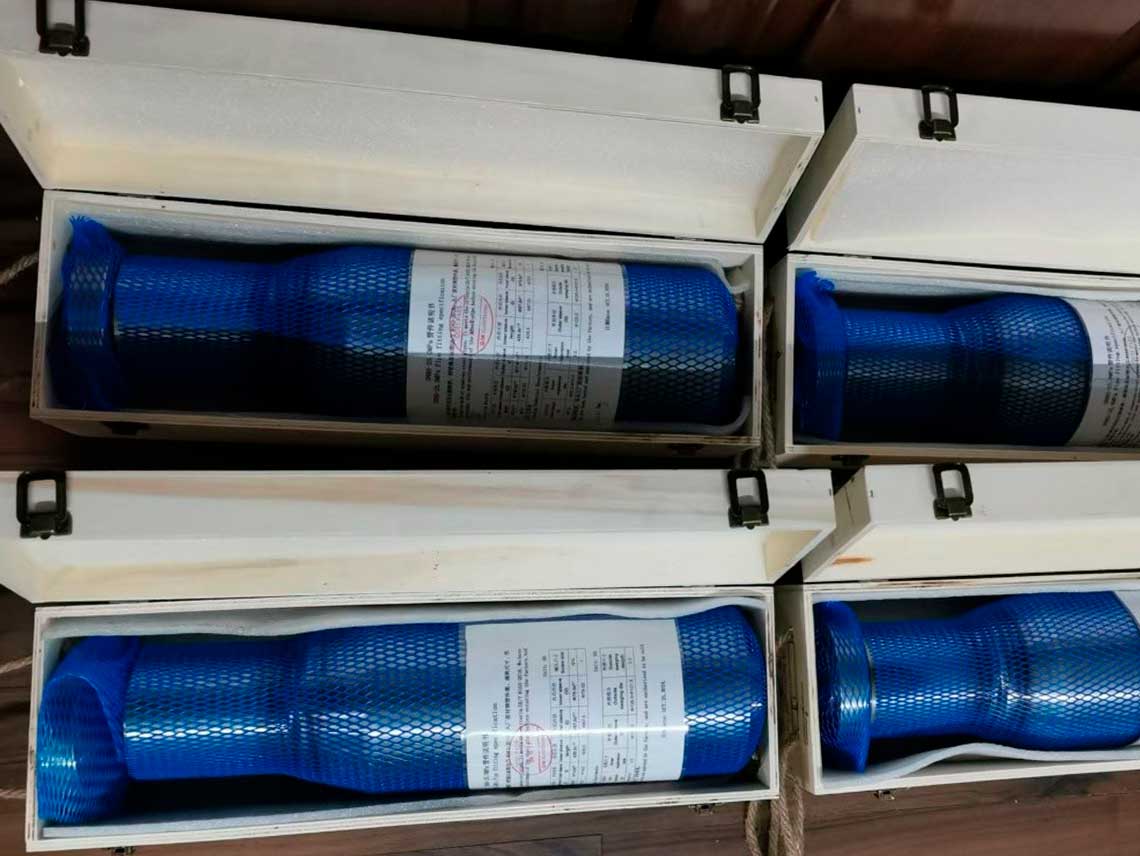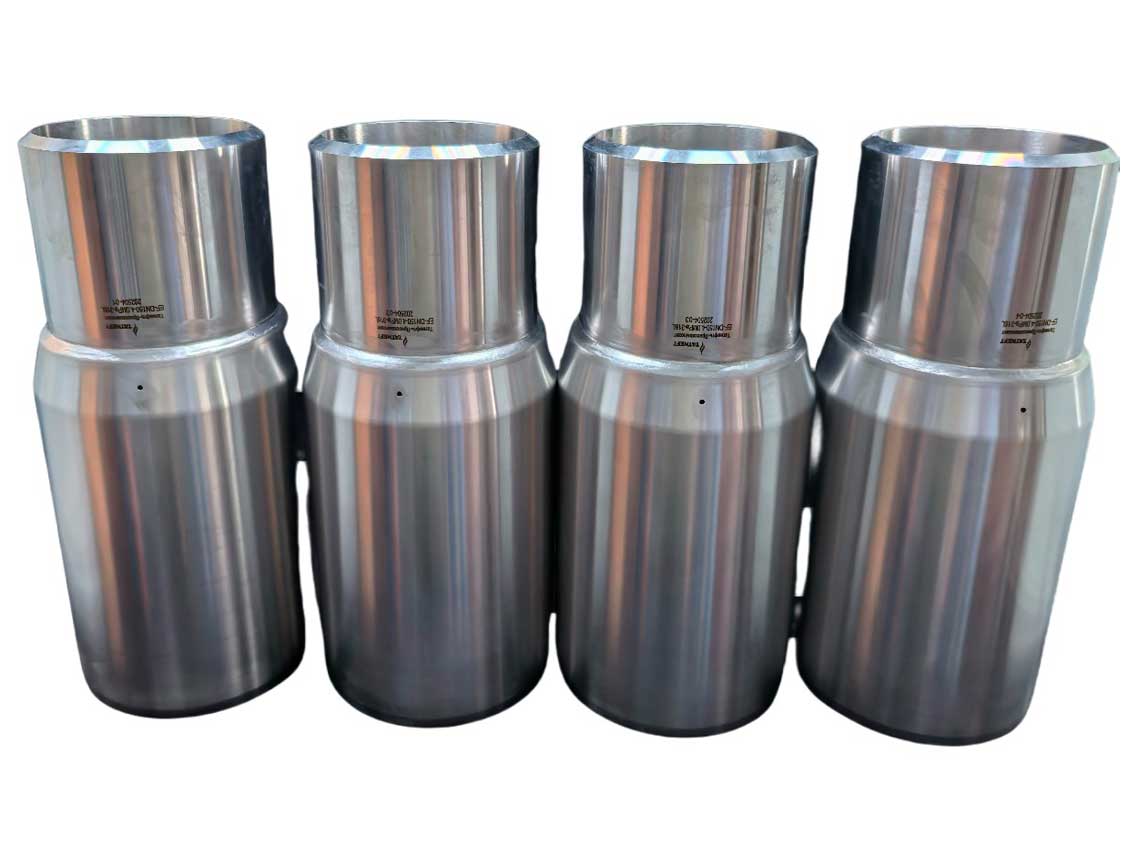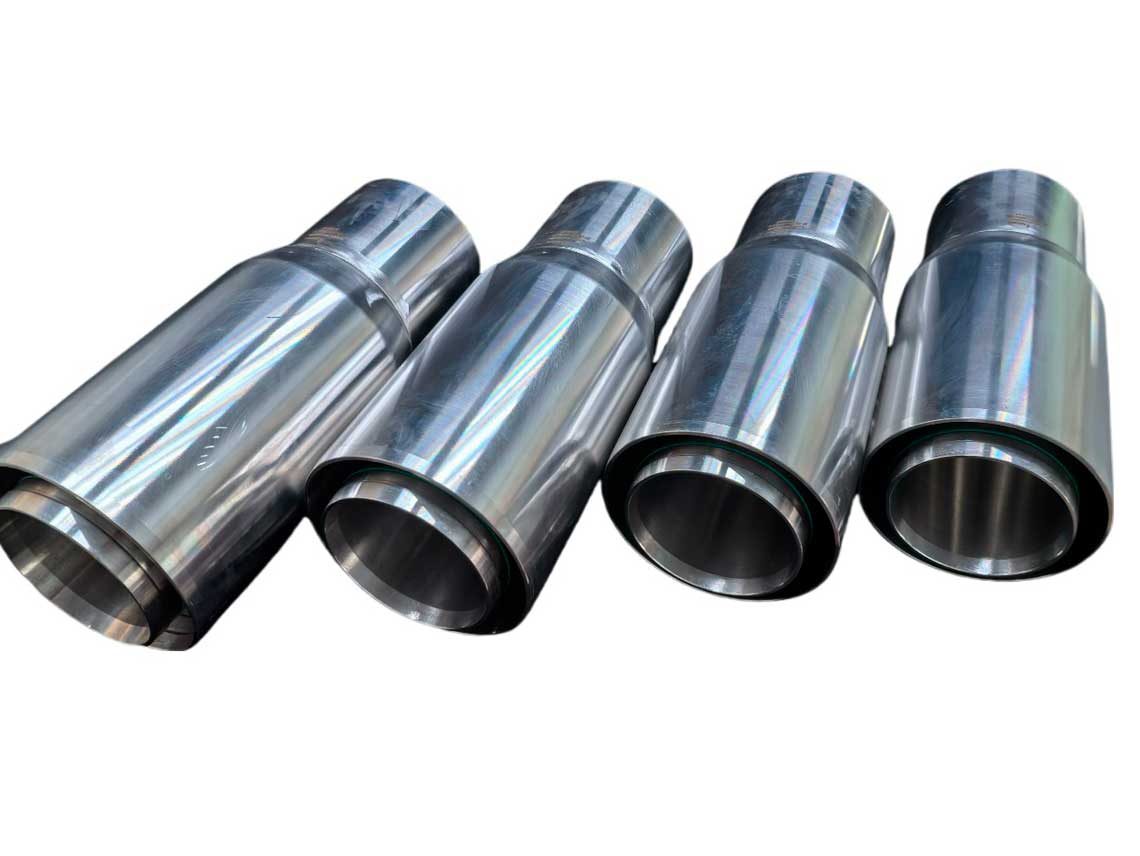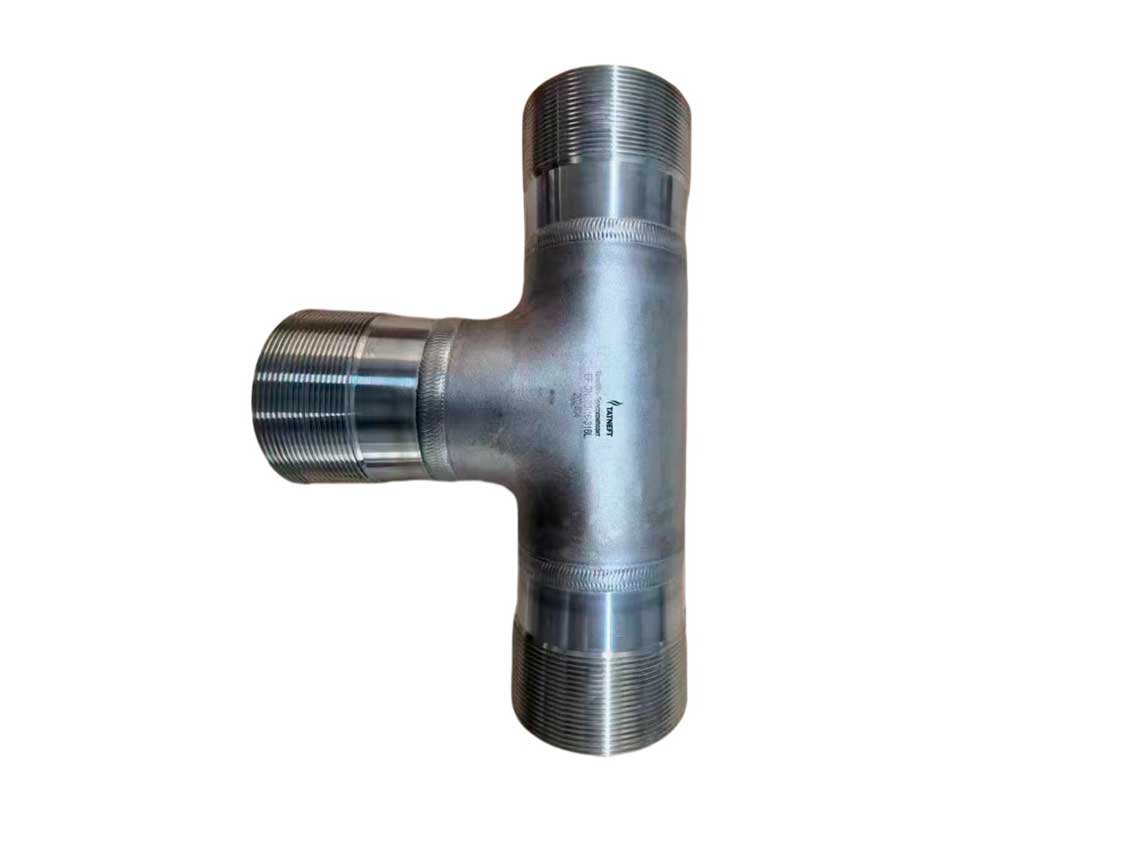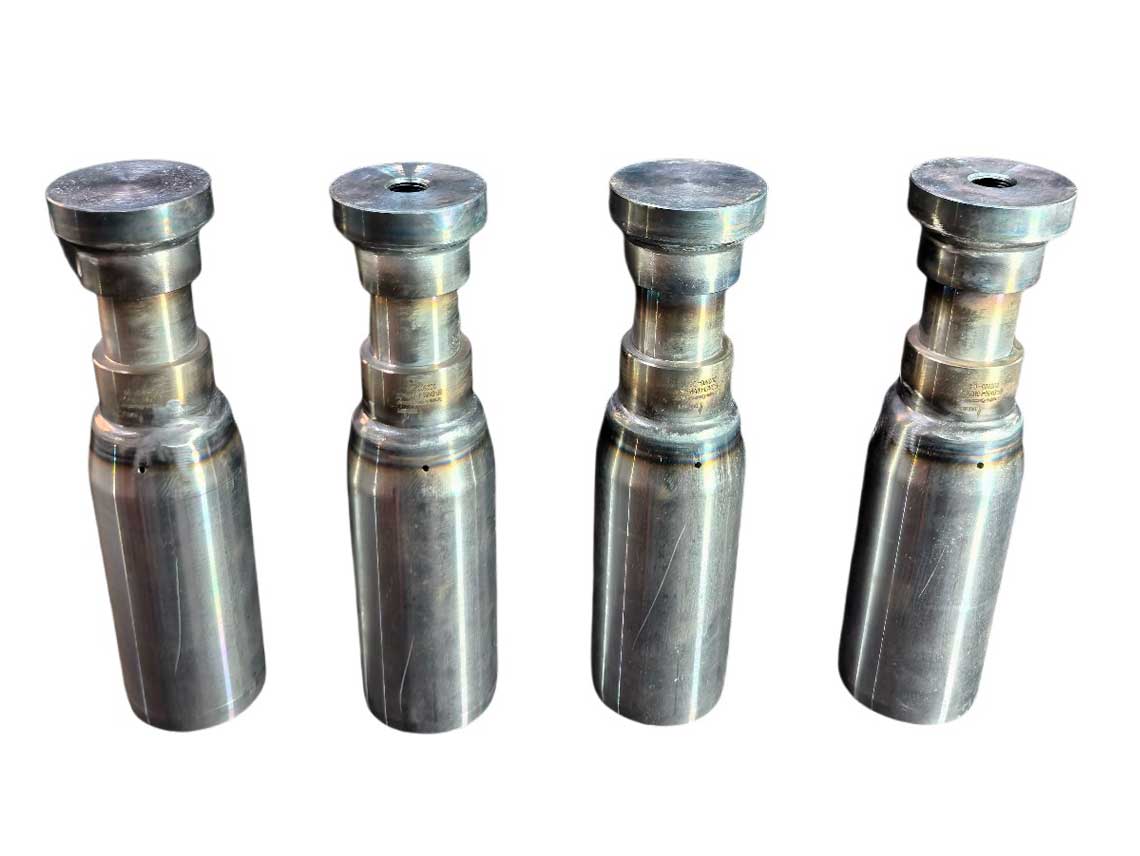Compression Fittings for RTP/TCP
Why Inner Expansion for TCP?
TCP (Thermoplastic Composite Pipe) is typically glass-fiber-reinforced, with its reinforcement layer requiring multiple glass fiber layers—sometimes more than 20–30 layers. Glass fiber has an extremely low elongation at break (only 1.5–2%). If external compression is applied (e.g., via significant deformation of an outer metal sleeve), the pressure can act directly on the outer jacket and transfer to the reinforcement layer. This easily leads to fiber breakage or interlayer delamination, which compromises the pipeline’s mechanical performance.
Therefore, to minimize deformation of the outer jacket layer, we redirect some deformation to the TCP pipe’s inner layer. Specifically, the inner steel sleeve needs to undergo a certain degree of expansion, allowing the teeth on the sleeve to embed into the plastic inner liner. This embedding mechanism delivers sufficient strength to the end fittings.
End-Fitting with Flange
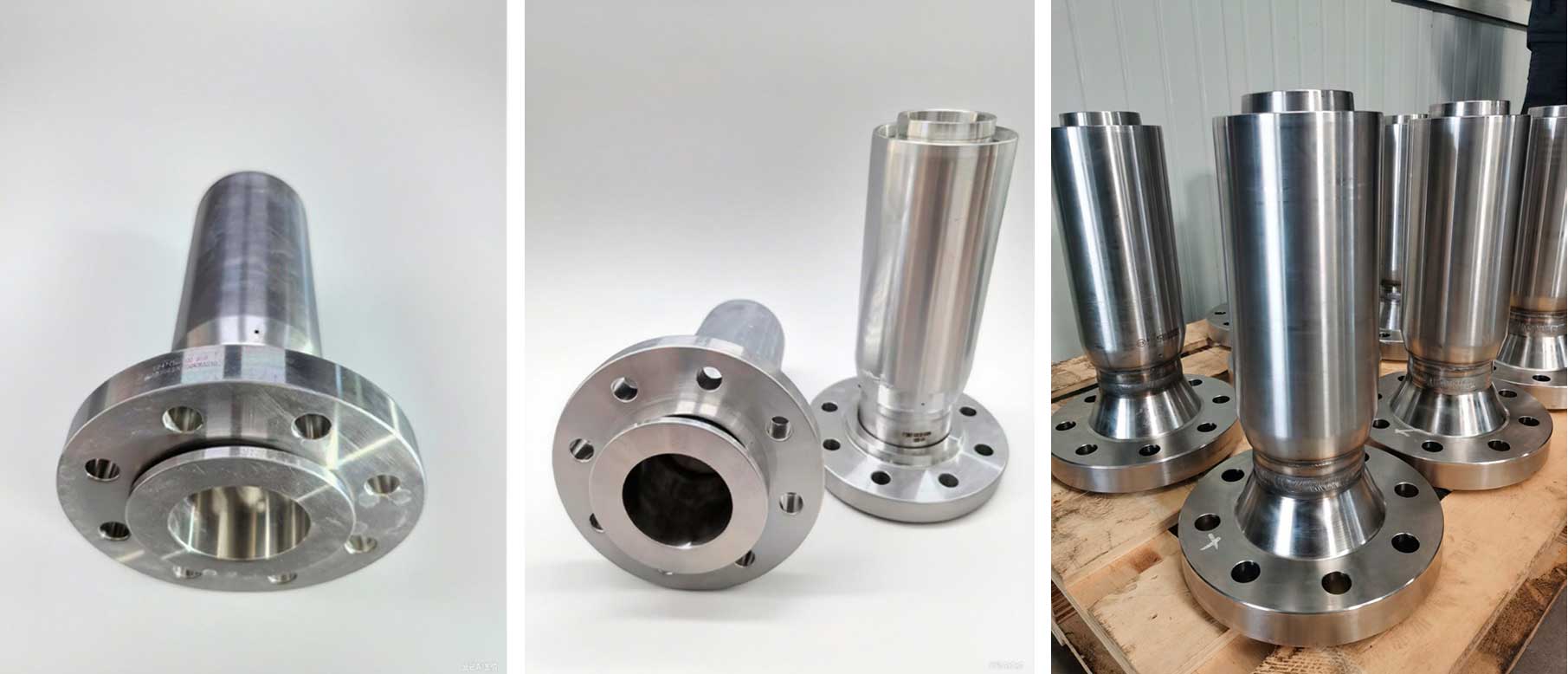
Midline Pipe-to-pipe Connector

Welding neck Connector

Midline with Screw Connector

Midline with Screw Connector



